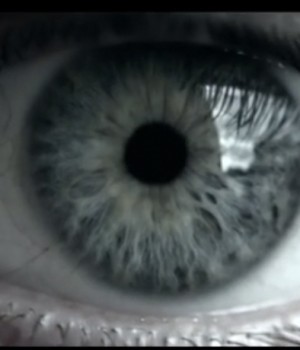The path from start-up to success story can be a challenging journey. These two Victorian innovators are taking the path less travelled, turning good ideas into profi table businesses, and they’re not looking back!
 BRIDGING THE GAP
BRIDGING THE GAP
With the rapid commercial uptake of broadband services, many organisations are faced with the conundrum of how long they can stretch their existing narrowband-based infrastructure before having to invest a small fortune in major upgrades.
Victorian-based company, Avara Technologies, offers a clever solution. Formed in 2002, Avara manufactures next generation broadband multi-service equipment, primarily used for implementing data and telecommunications networks. The company’s integrated platform supports a range of legacy and new broadband type interfaces over fibre optic medium.
“We service a range of different clients, from networks for utilities, to fibre-to-the-home solutions providers, to road and rail operators needing video cameras networked,” says Avara Technologies CEO, Lasha Aponso.
Avara’s core technology is calibrated to the demands of packet-based IP ethernet broadband services, but its core network also caters to the narrowband Time Division Multiplexing (TDM) legacy services. “Particularly in the utilities sector, the need for some legacy TDM circuits will remain for some years to come, but the requirement for the packet-based ethernet services is growing exponentially,” says Aponso.
Avara has intentionally focused on the niche utilities market because its requirements are too rigorous for conventional mass market IT infrastructure.
“One of our features is high availability,” says Avara director, Stephen Lacey. “Electricity suppliers can tolerate seconds of outage per year. Railway operators can’t have their signalling systems off-line. Our product range is intended for these harsh industrial environments and provides back-up systems.”
Avara’s aim is to efficiently deliver broadband services together with existing narrowband services. “Narrowband TDM infrastructure is not going away. But IP data infrastructure is going to overtake it and we are in a position to provide the best of both worlds,” says Aponso.
Avara intends to satisfy the seemingly limitless market demand for bandwidth. It currently provides legacy transport over a 100Mbps network, but will be offering gigabit solutions and beyond in the near future.
The company currently has distributors in Australia, Asia, India, and the Middle East, and is pushing into Europe and, eventually, the US.
www.avaratechnologies.com
 A PLEASING EXCHANGE
A PLEASING EXCHANGE
When it comes to environmentally friendly technologies, people still tend to browse with their hearts and shop with their hip pockets. So when a technology offers both budgetary and environmental savings, everyone pays attention.
Melbourne-based Rotary Heat Exchangers Pty Ltd (RHE) is the only Australian company that manufactures and distributes rotary heat exchangers (or heat wheels). Heat wheels recover waste
energy from the air conditioning systems of commercial buildings, hospitals and aquatic centres, reducing energy usage and cost.
The basic design of the heat exchanger was developed by CSIRO and Monash University in the 1970s. The technology has undergone continual refinement over the years to extract maximum thermal performance with minimum airflow pressure loss.
“It substantially reduces energy requirements and greenhouse emissions from air conditioning systems of buildings and aquatic centres,” says RHE Managing Director Bill Ellul.
The heart of the unit is a rotor 100mm wide and covered by a film of Mylar (commonly used in boat sails) less than 1mm thick, producing a heat exchanger matrix with smooth parallel passages of about 1mm spacing for airflow. The rotor is the narrowest high performance heat exchanger of its type in the world, with no tendency to pick up dust.
The robust nature of the Mylar makes the wheel suitable for salty seaside environments and high chlorine atmospheres found in aquatic centres. Large quantities of fresh air replace the high humidity chlorinated pool hall air without imposing huge demands on the heating system. This results in low running costs and reduced moisture damage to the building. The technology is installed in Federal Parliament House Pool, Melbourne’s Federation Square and many recreation centres around Australia.
RHE is unique in offering a 10-year warranty on the rotor matrix. Its heat exchangers can be retro-fi tted to existing systems or built into new systems.
www.ecopower.com.au
DID YOU KNOW?
The following VicStart Program Partners will provide practical advice or hands-on mentoring and management advice to Victoria’s high-tech innovative companies wishing to develop the skills and networks needed to grow and to export globally.
• INNOVIC – providing advice and referral services to very early stage inventors and innovators.
• RedCentre – focusing on developing business skills in emerging technology areas, such as photonics and microtechnology.
• Information City – providing a mentoring program to strengthen management of young companies.
• ADI – providing a range of services to stimulate the investment environment for emerging technology companies.
• Melbourne Ventures – deploying talented international-calibre CEOs into early stage fi rms with high growth potential.
More information is available at:
www.innovation.vic.gov.au/programs (select “VicStart”).






![Five essential ingredients for a humming homepage with James Tuckerman [FREE REPORT]](https://anthillonline.com/wp-content/uploads/2015/07/homepage-checklist-1680-01-copy-300x194.png)
![The Gaddie Pitch in three simple sentences with Antony Gaddie and James Tuckerman [CHEAT SHEET]](https://anthillonline.com/wp-content/uploads/2015/08/GADDIE-PITCH-updated-3D-cover--100x75.png)
![5 Ways to get more out of your coffee shop meetings with Antony Gaddie [CHEAT SHEET]](https://anthillonline.com/wp-content/uploads/2015/07/gaddie-3d-cover-01--100x75.png)
![Instagram for Business… in 12 steps [FREE INFOGRAPHIC]](https://anthillonline.com/wp-content/uploads/2015/08/Capture7-100x75.jpg)
![Generating Web Traffic with Mark Middo and James Tuckerman [FREE REPORT]](https://anthillonline.com/wp-content/uploads/2015/08/Capture3-100x75.jpg)
![How to build a retail empire with James Webber [FREE REPORT]](https://anthillonline.com/wp-content/uploads/2015/06/james-webber-instagram-memes-01-100x75.jpg)


![Need cash for your startup or innovation? Here’s the Ultimate Grant Guide for Innovators and Startups [FREE DOWNLOAD]](https://anthillonline.com/wp-content/uploads/2015/10/INNOVATORS-GRANT-GUIDE-NFSU-page-spread-300x194.png)

![How to market your business when you don’t have a business yet [CHEAT SHEET]](https://anthillonline.com/wp-content/uploads/2016/01/oli-gardner-memes-02-100x75.jpg)
![Learn how to devise winning business ideas in four steps with Martin Martinez [CHEAT SHEET]](https://anthillonline.com/wp-content/uploads/2015/07/Screen-Shot-2015-11-26-at-13.44.27-100x75.png)
![Learn how to generate more leads in one month than most competitors would in one year! [FREE REPORT]](https://anthillonline.com/wp-content/uploads/2015/08/Capture4-100x75.jpg)
![New Zealand’s Xero eyes US IPO, further disruption as subscribers increase [INFOGRAPHIC]](https://anthillonline.com/wp-content/uploads/2014/07/sruuuuujana-212x194.png)
![Ever wonder if your ‘content marketing’ is really just crap? You gotta see this! [INFOGRAPHIC]](https://anthillonline.com/wp-content/uploads/2014/08/content-100x75.jpg)
![7 Business Lessons From Game of Thrones [INFOGRAPHIC]](https://anthillonline.com/wp-content/uploads/2014/10/infographic-games-of-thrones-041-100x75.jpg)
![How to build your own Media Empire… In seven steps with Nathan Chan [INFOGRAPHIC]](https://anthillonline.com/wp-content/uploads/2014/10/Nathan-Chan-Infographic-e1413419529176-100x75.jpg)
![5 Business Lessons From Tinder [INFOGRAPHIC]](https://anthillonline.com/wp-content/uploads/2014/10/Tinder-Elegant-Infographic-100x75.jpg)



